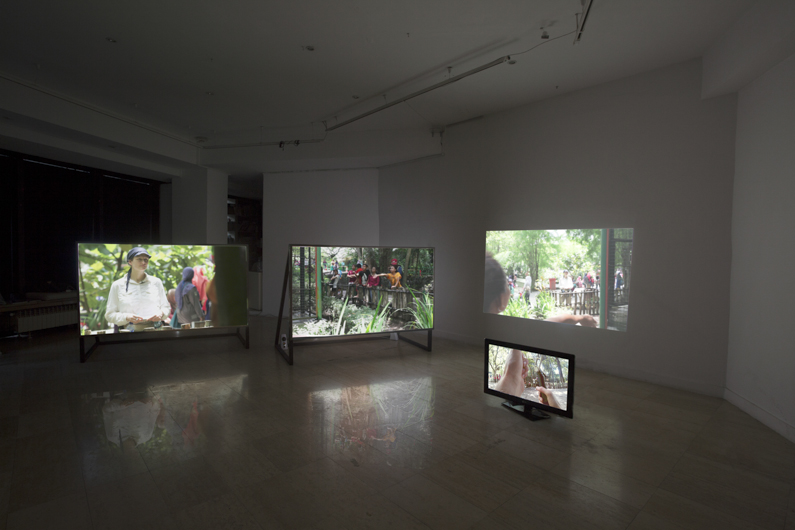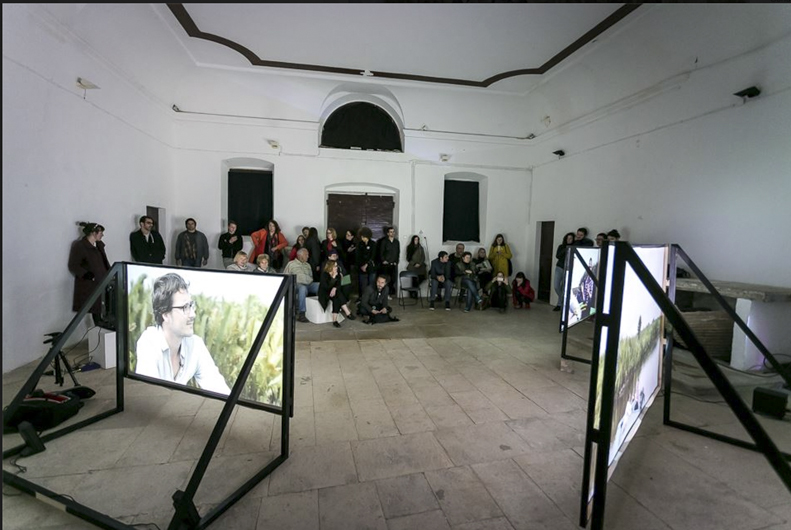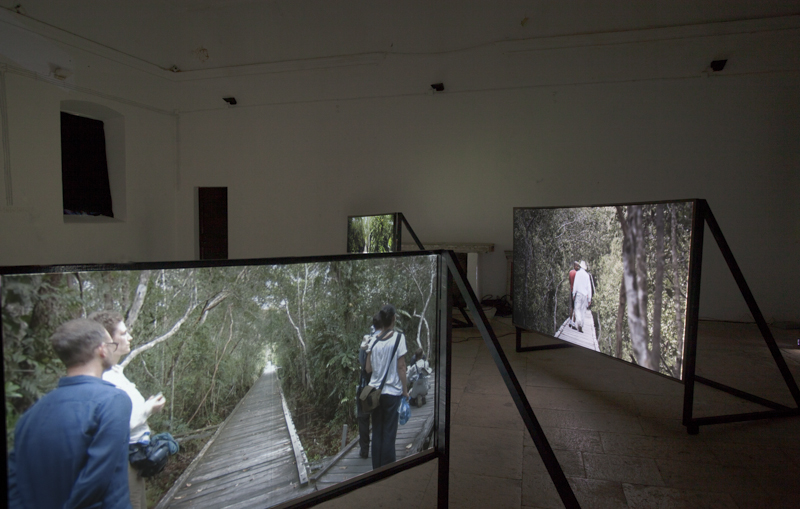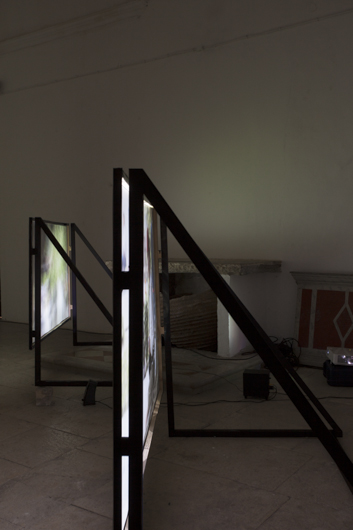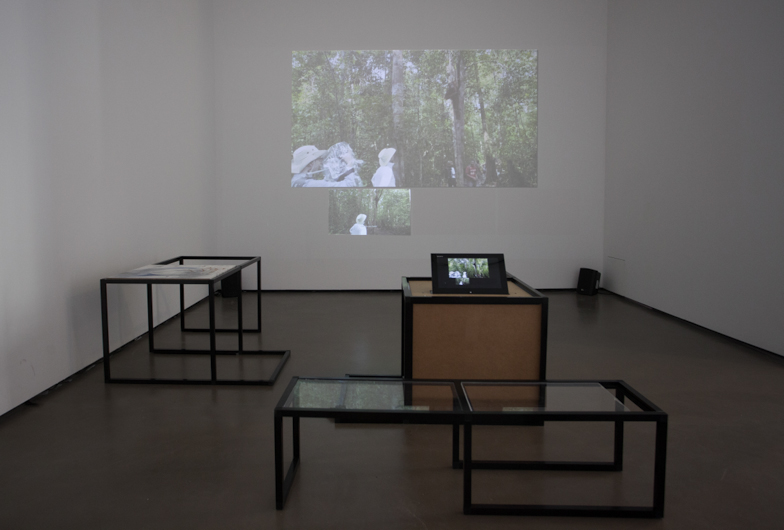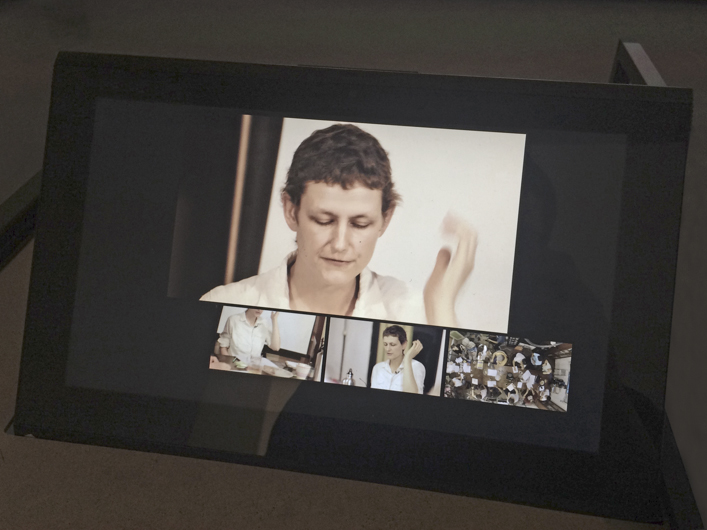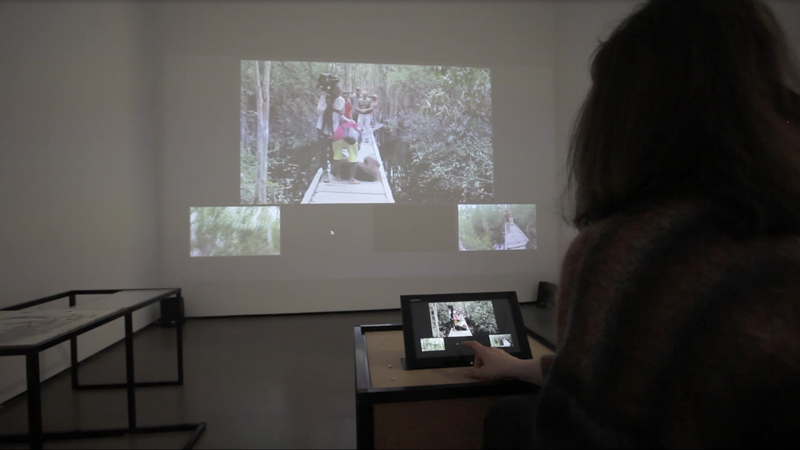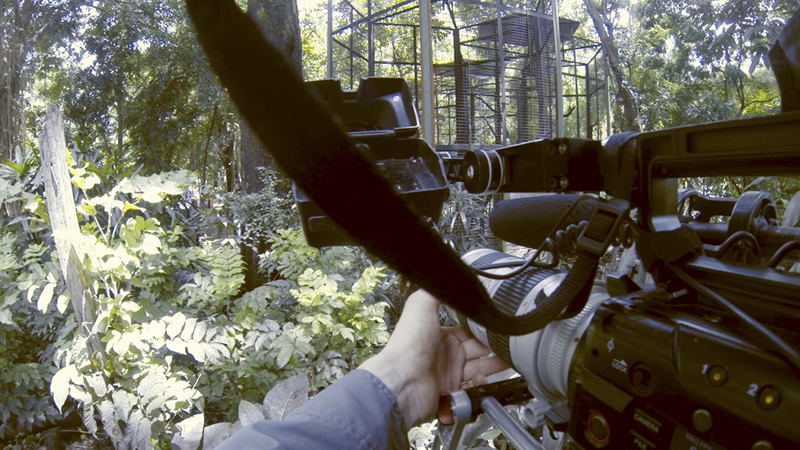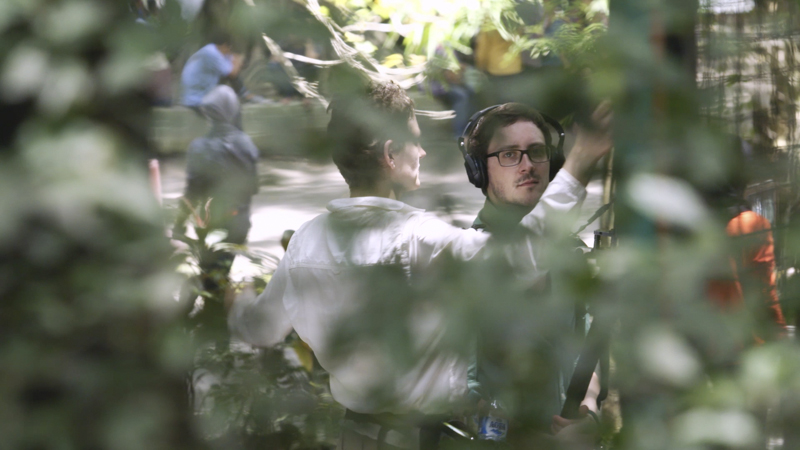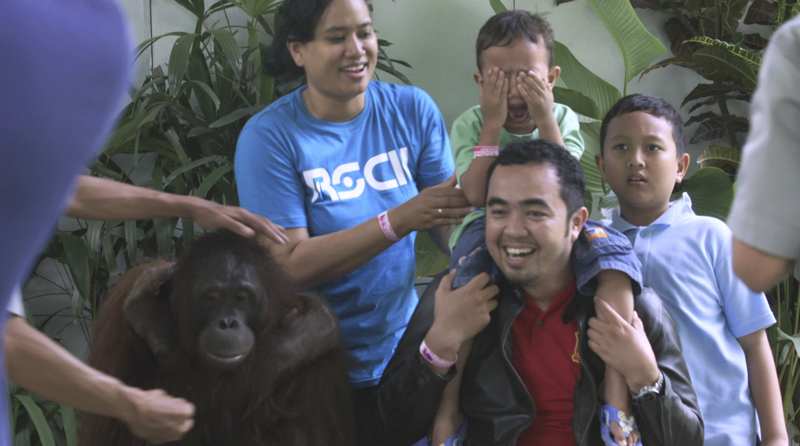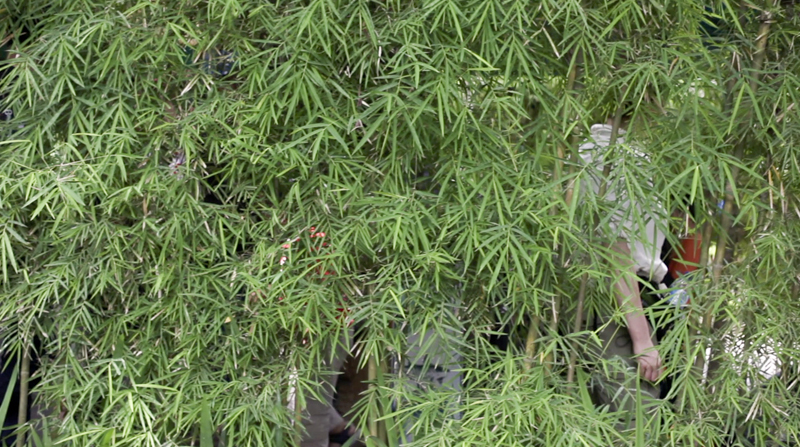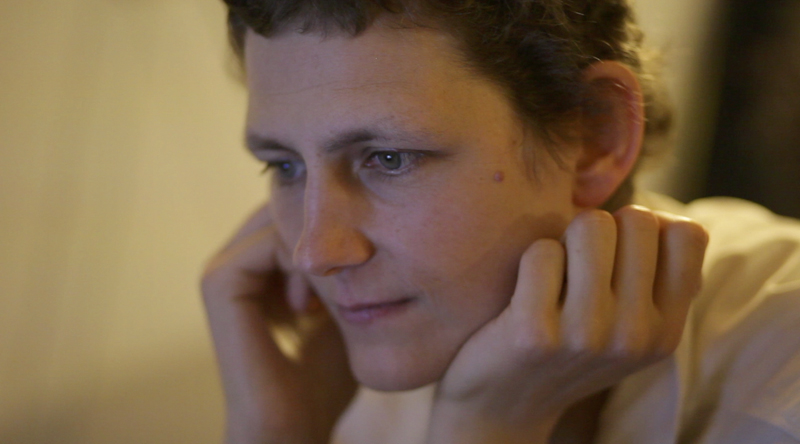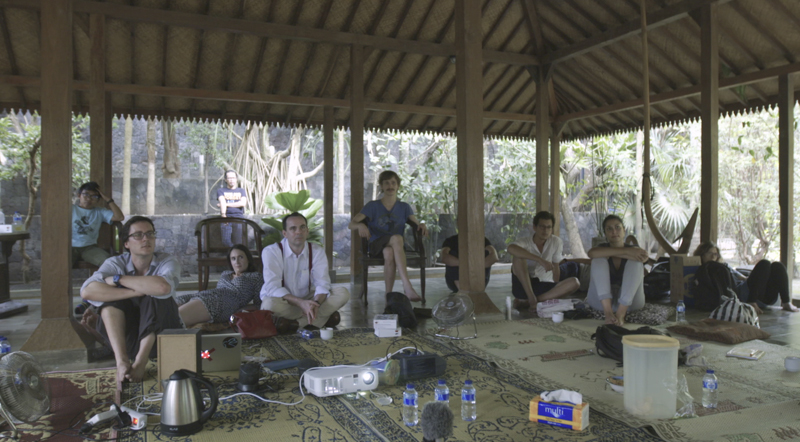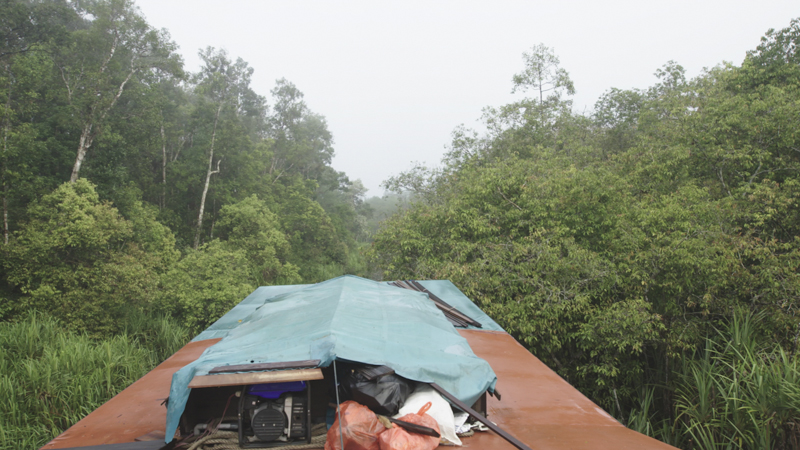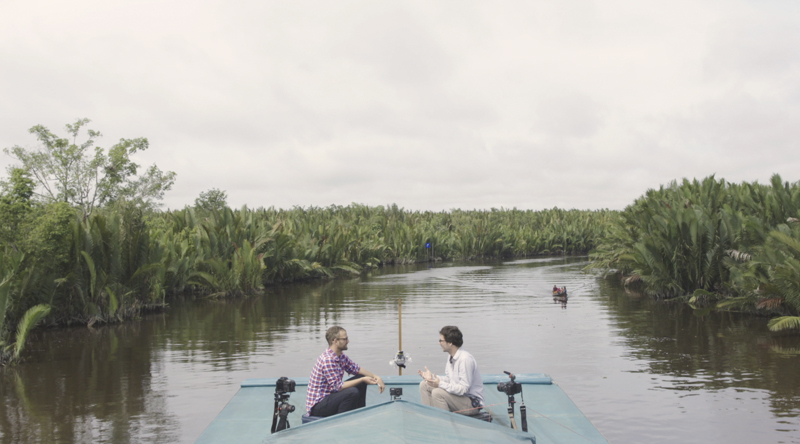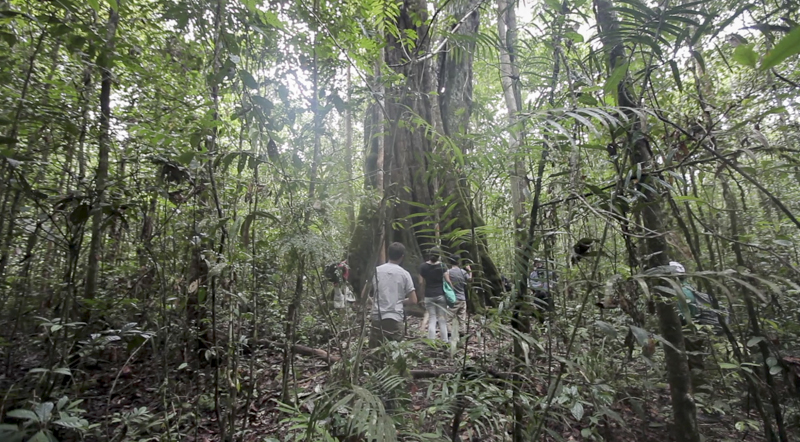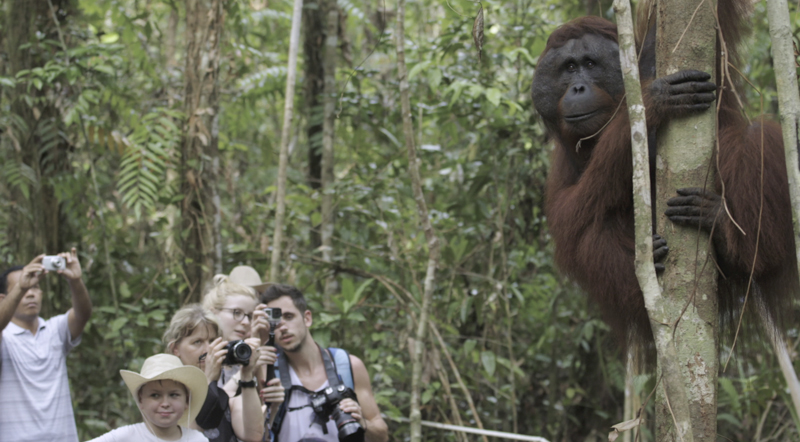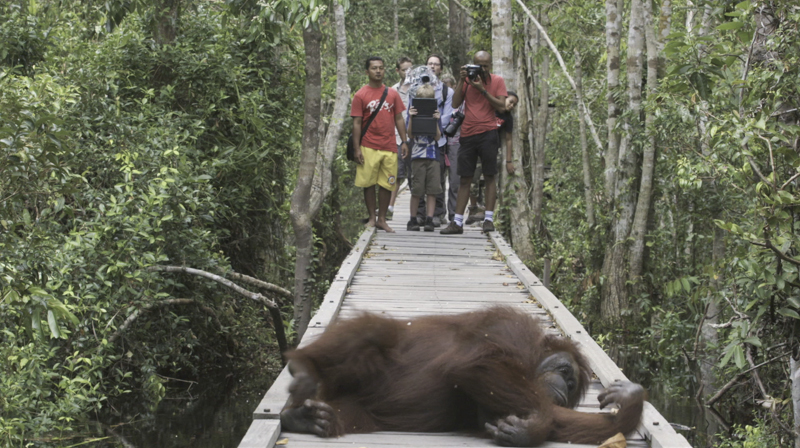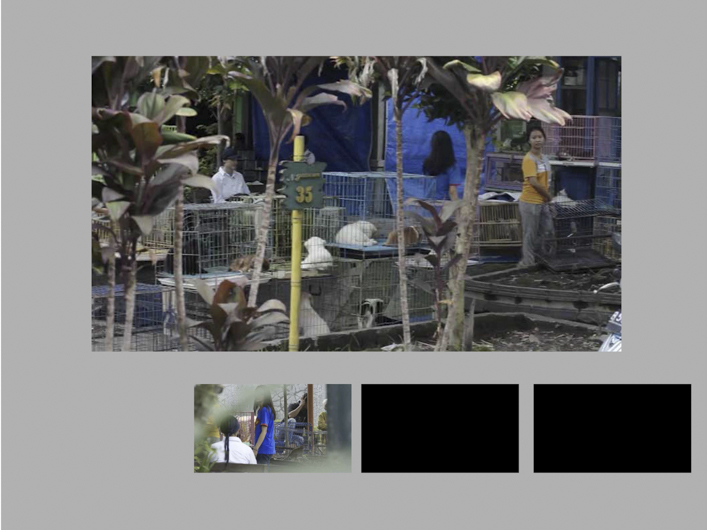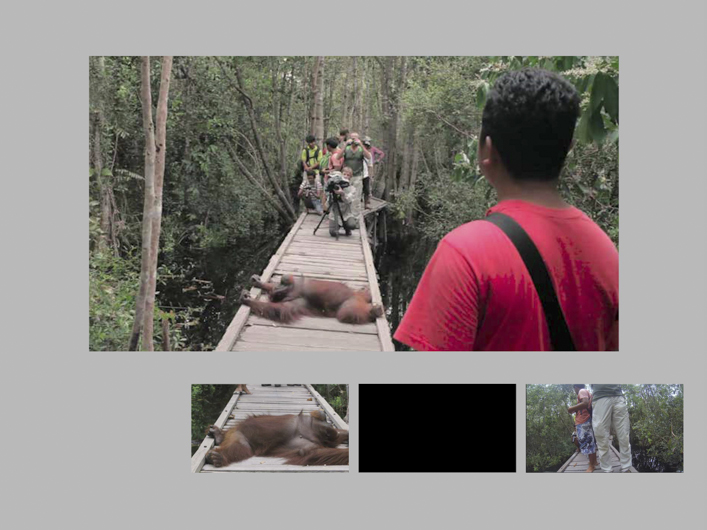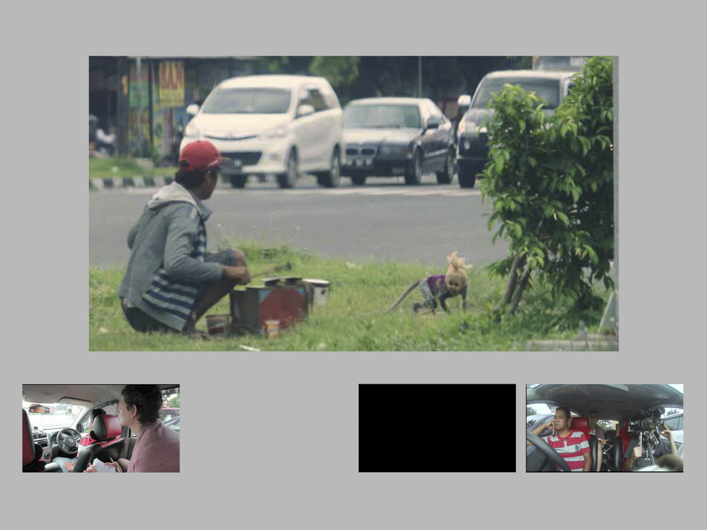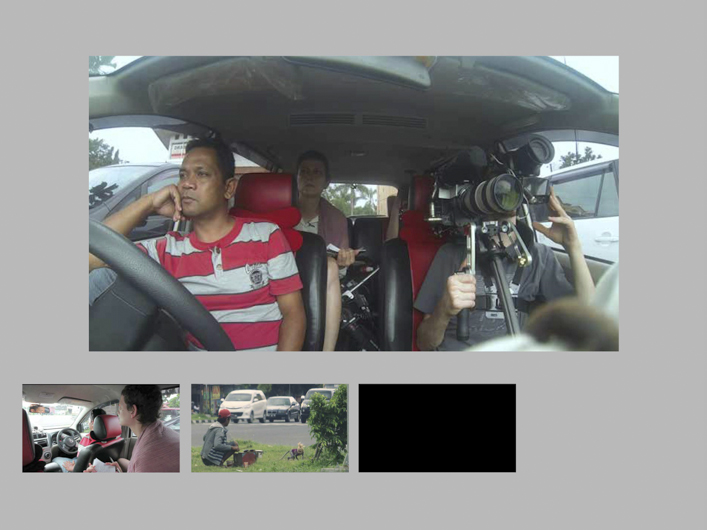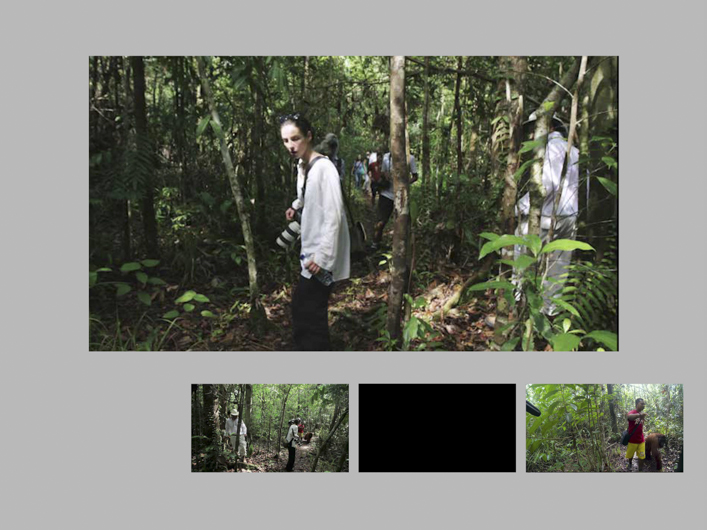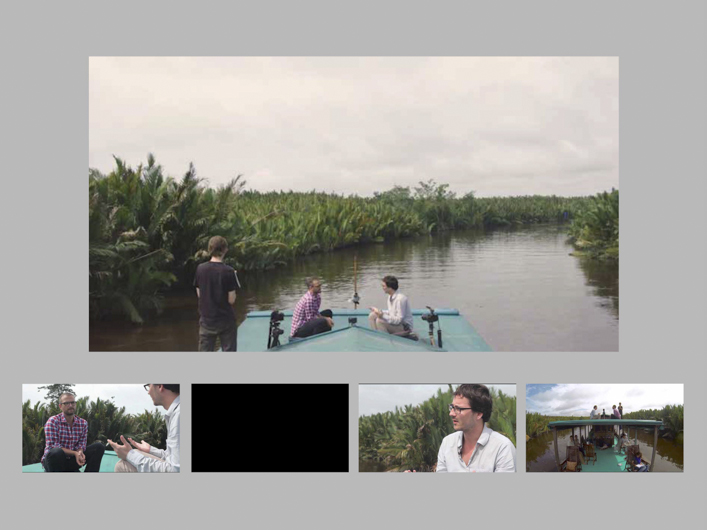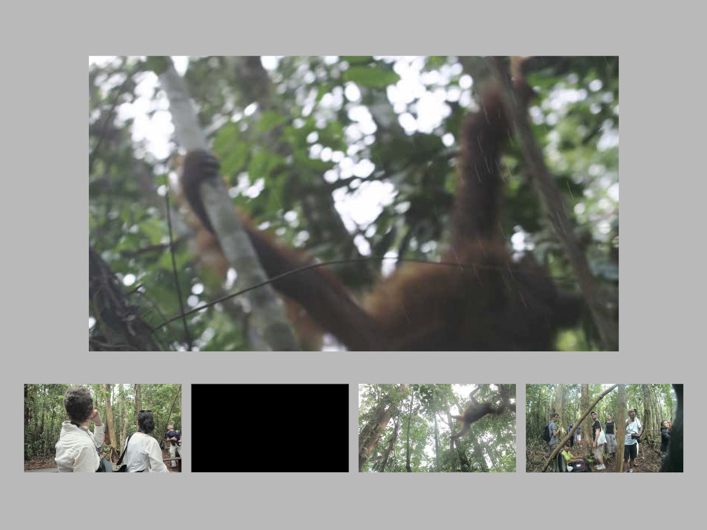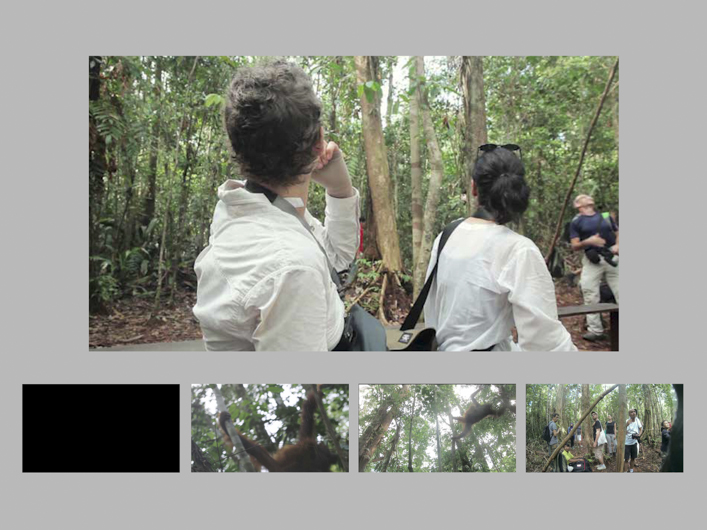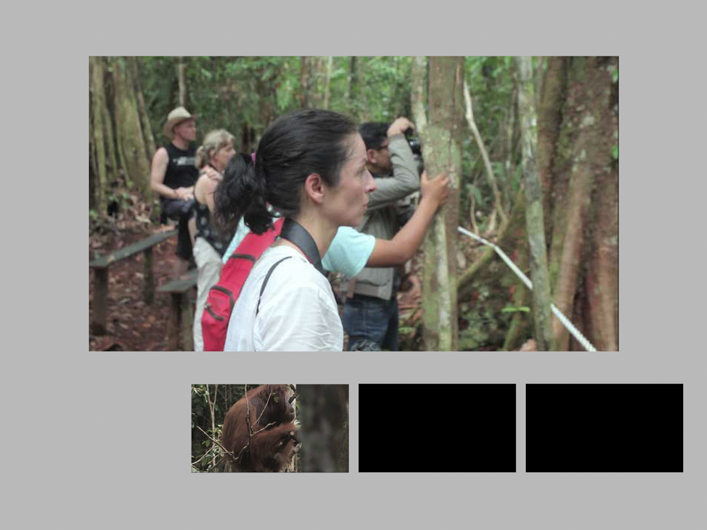The artistic work for On Choosing An Appropriate Distance is about the relation of proximity and distance of primatology behavior scientists. In the investigation and adoption of scientific methods – like observing behavior in the free field (primatology) and the research in personal archives of primatologists – is supposed to make the invisible observer (Researcher) and the observer of the observer (artist) visible. It is about an extended usage and new interpretation of scientific data in an artistic context. The focus is on the representation of the research as a highly subjective process. It is the aim to reconstruct complex structures of conditions of the observing research. By means of a expansive, multimedia-based installation for an exhibition space, different text-based, auditive and visual perspectives will be shown in a corresponding character. Simultaneously, they ought to show the visitor a new form of perception of research. In a second form of presentation, the film is an interactive film channel projection, and the viewer is offered the possibility to edit his own movie and experience it all over again.
On Choosing An Appropriate Distance, 2016
[borlabs_cookie_blocked_content title=”Video”]
[/borlabs_cookie_blocked_content]
[borlabs_cookie_blocked_content title=”Video”]
[/borlabs_cookie_blocked_content]
On Choosing An Appropriate Distance, 2016
Lea Vene
Project Primatologist – On choosing the appropriate distance by Emanuel Mathias positions the artist as a participant observer in the fieldwork research in Indonesia. He is invited to accompany a group of primatologists and ethnologists while they research the habits of primates and their interaction with the humans. The primates research and the art project are directly intertwined because they both utilize an act of observation as an important research method. Multi-channel film installation opens new insights into the potential of observational cinema and observational filmmaking methods which are focused on grasping direct, lived and real time experience. Observational films are also focused on the experiences of the subjects, openly capturing and representing the relationship between the filmmaker and the subjects. The project by Emanuel Mathias unveils several different observational positions (primatologists, ethnologists, apes, locals, camera operators, artist) that are mutually dependent and in constant interaction. In that sense the film offers multiple points of view parallelly present during the fieldwork research. This method enhances the viewers immersion in the position taking process that’s being constantly negotiated during the research. In order to catch the action on the run the gaze of the viewer is shifted and redirected so as to discover variety of perspectives on different events. The viewer is therefore asked to actively engage his gaze and fill the unmediated space of the film. It is exactly the act of showing (so vividly present in the observational cinema) that enables fluidity and ambiguity of actions presented (most of the time without commentary). Avoiding mediation actually allows the spectators to draw their own conclusions and interpretations. The project also uncovers moments of self-observation which openly question filmmakers act of observing and behaving among the rest of the research team. The role of artist is recognized just as equal as any other role in the film and is frequently present as the one being observed too. Throughout the flm we are continually confronted by various levels of revelations and disclosures that speak directly about the backstage (weather it’s the backstage of the filmmaking process or the backstage of the scientific research).
Lea Vene, Gallery G-MK Zagreb, Croatia, 2016
Oliver Lubrich
In the Heart of Artificiality
Orang-Utans of Borneo in-between primatology, protection of species and tourism (excerpt)
From a last landing area the way leads to “Camp Leakey”. It is named after the mentor of the three most-known primatologists: Dian Fossey who supported the preservation of mountain gorillas in Zaire and Ruanda. She was murdered with a machete. Jane Godall who’s work prevailed chimpanzees. And Biruté Galdikas who fights for the survival of Orang-Utans in Indonesia. A sign explains: She is Canadian, deriving from Lithuania and was born in Germany after the war. Since the beginning of the 1970s, she was spending 100.000 observing hours here. You can visit an preserved hut on stilts. A museum is showing portraits of apes framed in wood and her family tree in both of her two rooms. An artificial room is consuming a lot of space, consisting of textiles. An installation of matches is supposed to show the extent of the damage of the rain forest. Woodcutlike figures of humans and great apes hint at the idea of evolution in a country where religious denomination is the law. Whereat Orang-Utans are beside Homo sapiens, whilst the chimpanzee is genetically our closest relative. A shirt is shown as an original of the primatologist. But the visitor doesn’t get to know the results her longtime research.
To study a threatened species in an endangered environment is multiplex challenge, not at least emotional. Who doesn’t want to study the animals while in captivity has to move to the ever shrinking parts of the wood. And will find himself in the middle of tourists. He or her has to treat the own team like locals, who are assuming different cultural and economical preconditions: a local guide, the landlord of a simple accommodation or the caretakers of an overstrained animal shelter. Even the handing over of donations can be a logistical challenge. Appointments will be rescheduled, receipt will be missing. It is a matter of patience and diplomacy. To make things worse, there are hygienical problems, heat and humidity, tropical diseases or exhausting provisions with medicine and toxic bug spray, the stresses and strains of marches and sleeping outdoors, loneliness, boredom, depression and the always returning doubt of sense and success of ones own occupation. Worries about an endangered species detaches all researchers from their field. All those factors account for primatology. And the evolutionary-psychological understanding of humans. But there is no space for them in scientific publications because it might endanger the pretence of objectivity. Although, the determine the work with apes like no other discipline: Being
an increasingly commitment between primatology, perseverance of species and tourism.
Oliver Lubrich
The author is Professor for german and comparative literary studies at the University of Bern. Together with the evolutionary biologist Katja Liebal and ethologist Thomas Stodulka is he leading the interdisciplinary project “the Affects of Researchers” (supported by Volkswagen foundation): www.affekte.unibe.ch
